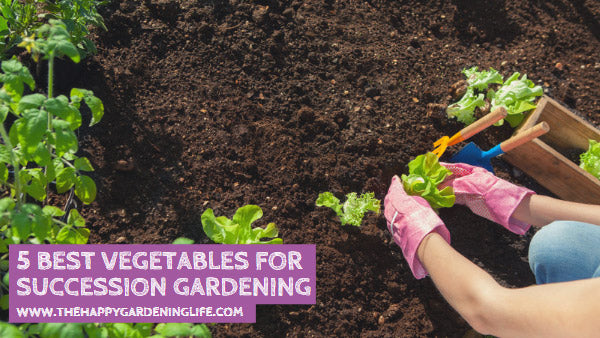
5 Best Vegetables for Succession Gardening
Share
 Want to grow different vegetable plants but don’t have enough space? Then you must try succession planting! This is an easy method used to by many gardeners to grow another type of crop after the first one has been harvested.
Want to grow different vegetable plants but don’t have enough space? Then you must try succession planting! This is an easy method used to by many gardeners to grow another type of crop after the first one has been harvested.
Succession planting is very convenient and beneficial as it gathers more nutrients for the health of your garden soil and vegetable crops. Before trying this gardening method, it’s advisable to plan ahead on what you really want to grow during the season.
For instance, if you’ve planted carrots that are ready for harvest, then you can start growing another vegetable so long they’re compatible with each other. Compatibility matters since you’ll be recycling the nutrients for the next set of crops.
For a list of the best veggies to grow for succession planting, check out these Top 5 picks below. They will help you get more yields and provide you with a delicious assortment of vegetables this growing season!
Want to share this blog post? Click on the social buttons on this page now!
5 Best Vegetables for Succession Gardening
1. Bush and Pole Beans – Purple, yellow and green. Beans can be planted at any time during the growing season, because most beans mature in approximately 65 days or less, depending upon weather conditions. They just cannot take a frost. Plant beginning of July for harvest at the end of August.
2. Beets And Carrots – All types of colors and sizes. Can plant at any time during growing season and can take more than an occasional frost. The Rainbow carrot blends are great for serving fresh or a nice visual for pickled carrots in jars. ‘Boldor’ yellow beets keep their color when cooked.
3. Broccoli – Grown from transplants. Plant beginning of August, in light shade so the plants won’t bolt. Broccoli will need to be watered on a daily basis so it will not wilt. A purple broccoli, ‘Purple Peacock’ and the heirloom ‘DiCiccio’ have performed well in our garden.
4. Kohlrabi – Plant throughout the summer. We like to plant small amounts of kohlrabi because they do grow very quickly, approximately 40 days from transplant.
5. Pak Choi – Plant this in early Spring and Fall. This oriental green prefers to be grown from seed and in cooler climates. It can grown in light shade. ‘Shiro’ is a variety that matures quickly and is perfect for succession seed planting.
Article Source: motherearthnews.com
